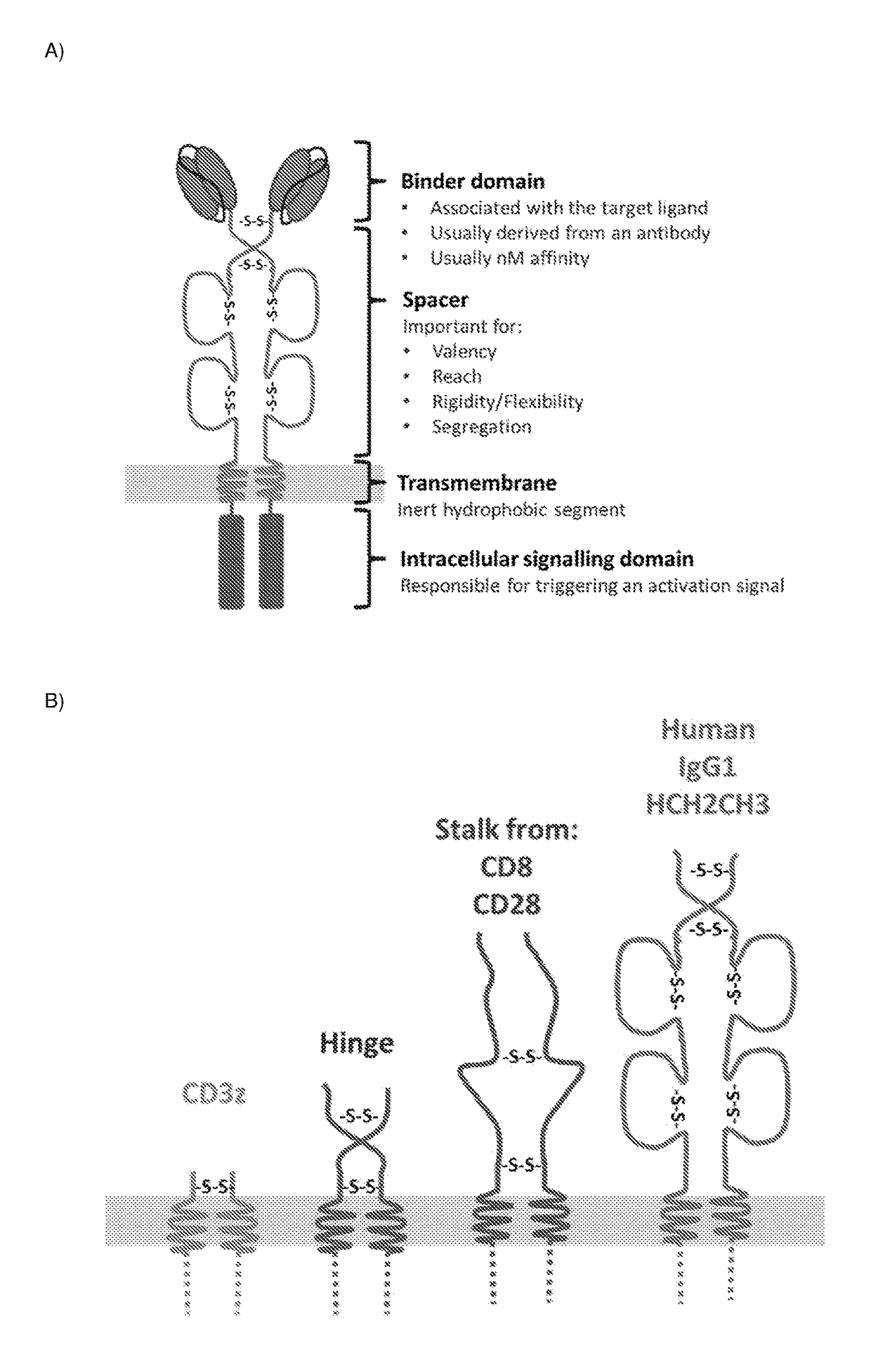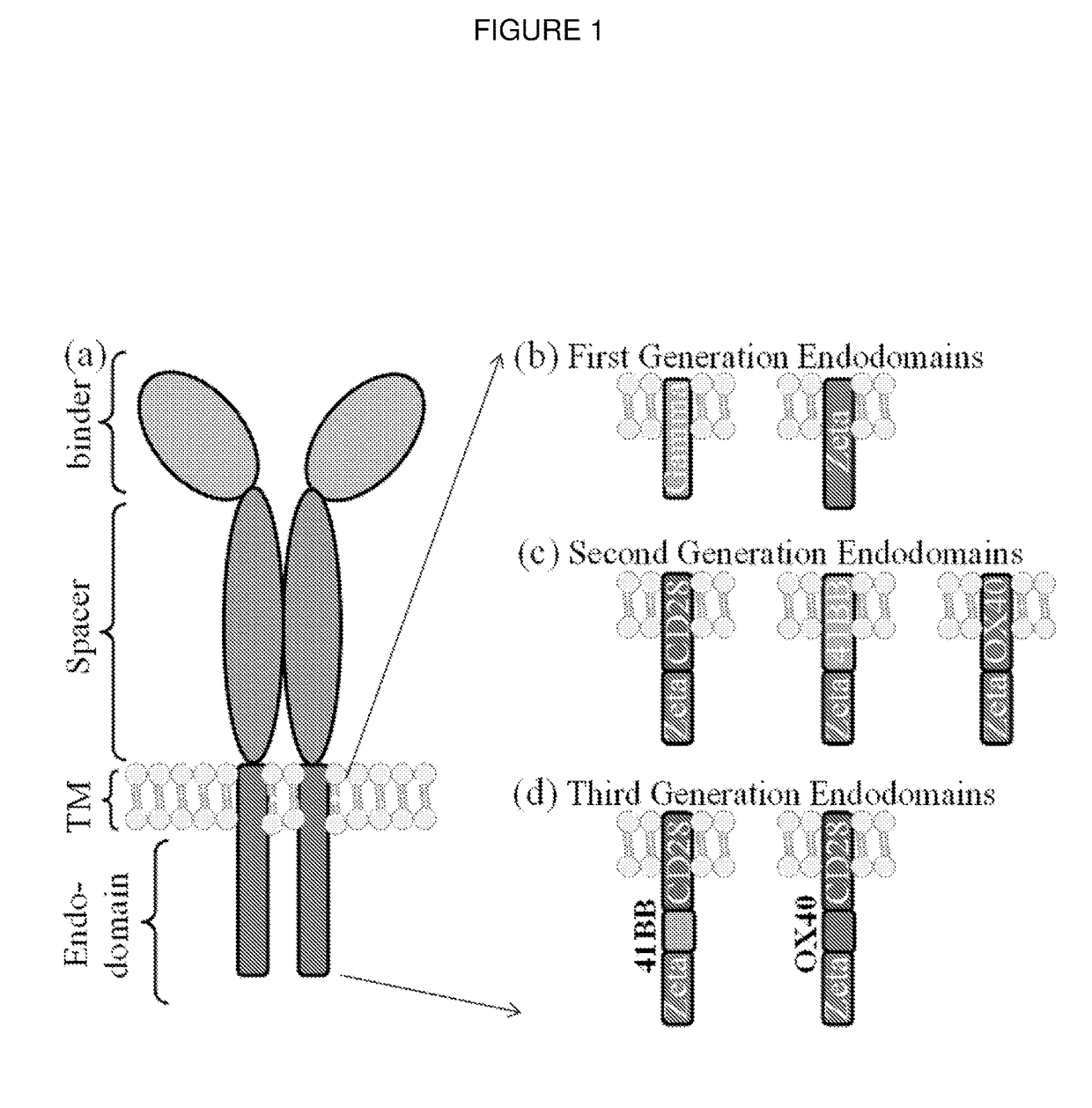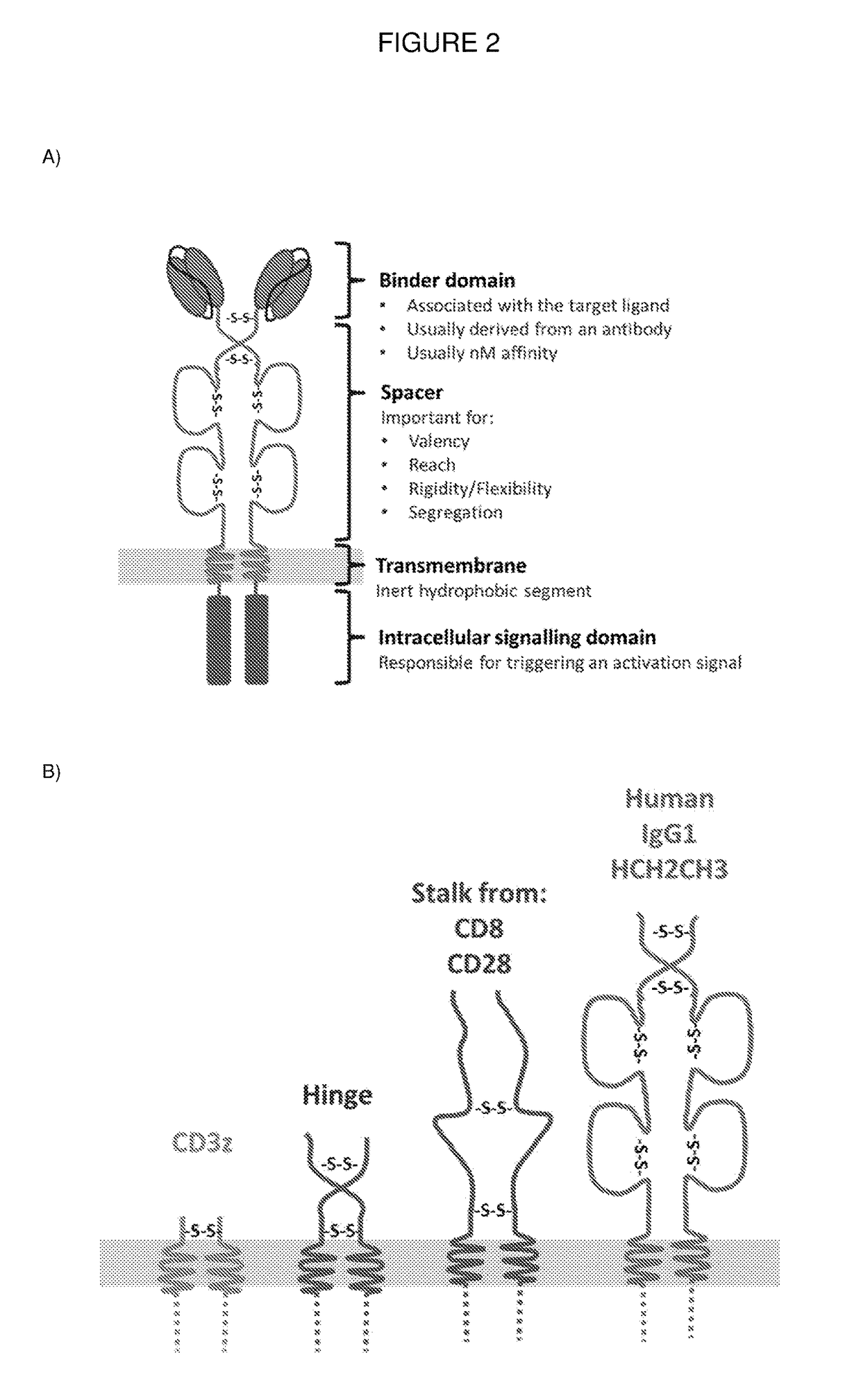Chimeric antigen receptor
a technology of chimeric antigen and receptor, which is applied in the field of chimeric antigen receptor, can solve the problems of difficult and quite often impossible to select and expand large numbers of t-cells specific for most cancer antigens, limited common spacers, and unpredictable changes in spacer siz
- Summary
- Abstract
- Description
- Claims
- Application Information
AI Technical Summary
Benefits of technology
Problems solved by technology
Method used
Image
Examples
example 1
n of COMP CARs at the Cell Surface
[0270]A murine T-cell line was transduced with the anti-CD33 COMP CAR (amino acid sequence shown in FIG. 5c and nucleic acid sequence shown in FIG. 5d) or anti-CD33 IgG1 CAR.
[0271]These cells were then stained with chimeric soluble CD33 fused to murine Fc IgG2a before a secondary stain with anti-mouse IgG PE (FIG. 6a)
[0272]A murine T-cell line was transduced with the anti-ROR-1 COMP CAR CAR (amino acid sequence shown in FIG. 5c and nucleic acid sequence shown in FIG. 5d) or anti-ROR-1 IgG1 CAR.
[0273]These cells were then stained with soluble His tagged ROR-1 followed by a secondary stain with anti-His-biotin and then a third stain with streptavidin-APC (FIG. 6b).
[0274]All four CARs were successfully expressed on the cell surface. These data also demonstrate that that the CAR binding domain is orientated in a way that does not impede ligand binding when linked to a COMP spacer.
example 2
on of COMP CAR T-Cells with Immobilised Ligand
[0275]T-cells with beads coated with immobilised ligand were used to stimulate COMP ROR-1 CAR T-cells. To achieve this, soluble His-tag ROR-1 was constructed and expressed. Supernatants containing these soluble ligands were then incubated at various concentrations with a set number of anti-His beads. The beads were then washed to remove unbound ligand and these beads were used to stimulate T-cells transduced with either the COMP CAR platforms or an equivalent CAR with an IgG spacer.
[0276]Transduced murine T-cells were co-cultured with anti-His beads that were pre-coated with different concentrations of soluble His tagged ROR-1 supernatant. The amount of IL-2 in the co-culture supernatant was analysed after 16-24 hours via ELISA (FIG. 7).
example 3
n Levels of ROR-1 Target Cells
[0277]The SKW cell line naturally expresses low levels of ROR-1. These cells were transduced with ROR-1 to increase the expression levels. These cells were stained with anti-ROR-1 APC and compared to non-stained cells (FIG. 8).
PUM
| Property | Measurement | Unit |
|---|---|---|
| size | aaaaa | aaaaa |
| length | aaaaa | aaaaa |
| length | aaaaa | aaaaa |
Abstract
Description
Claims
Application Information
 Login to View More
Login to View More - R&D
- Intellectual Property
- Life Sciences
- Materials
- Tech Scout
- Unparalleled Data Quality
- Higher Quality Content
- 60% Fewer Hallucinations
Browse by: Latest US Patents, China's latest patents, Technical Efficacy Thesaurus, Application Domain, Technology Topic, Popular Technical Reports.
© 2025 PatSnap. All rights reserved.Legal|Privacy policy|Modern Slavery Act Transparency Statement|Sitemap|About US| Contact US: help@patsnap.com



